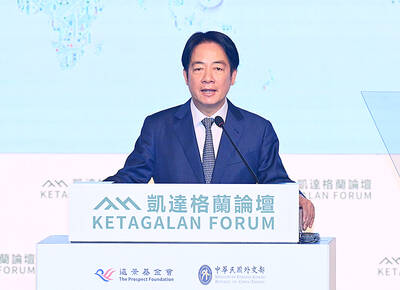Not long after the start of In Bruges, an amusing trifle from the potty-mouthed playwright Martin McDonagh, two hit men pause before a painting, awe and puzzlement and perhaps something else shading their faces. The painting — a 15th-century Netherlandish diptych — shows a prisoner wearing a loincloth and a strangely calm expression given that he’s being flayed alive. A small gathering of men (an audience, you might say) stands around the condemned, whose left calf is being peeled like a blood orange.
McDonagh has a thing for red. He splashes it around in his farcical play The Lieutenant of Inishmore and does much the same for In Bruges, his feature filmmaking debut. Neither work offers much beyond the comedy of words and wounds, though there is sting in both. In Inishmore an IRA enforcer says: “Come on in ahead for yourselves. I’m just in the middle of shooting me Dad.” The lines are funny kind of, sort of, precisely because of the apparent diffidence with which the enforcer (or, rather, McDonagh) joins two seemingly dissonant themes, in this case politeness and patricide. The enforcer tortures men in the name of terror, but (oh, irony!) he loves his cat.
The film’s hit men — an Irish Laurel and Hardy act called Ray and Ken and played by Colin Farrell and Brendan Gleeson — have come to the Belgian tourist town of Bruges on puzzling orders from their boss, Harry (Ralph Fiennes). There, about an hour from Brussels and a greater psychological distance from their home in London, Ray and Ken wait and talk and wait and talk in a hotel room built for two. Ken reads books and coaxes Ray to enjoy the sights. Ray responds by scuffing his shoes on the ground like the child he’s meant to resemble, from his pretty pout to his comically expressive eyebrows, dark slashes that rise and fall and further accent the already heavily intonated dialogue. The camera drags along too.
Much of the pleasure of McDonagh’s dialogue comes from intonation and repetition. His characters tend to repeat their own and one another’s words, a device that forces you to heed both the musicality of the language and all that lies beneath those words — the oblique hopes, the implied fears, the unarticulated relationships. “We shall strike a balance between culture and fun,” says Ken, while coercing Ray to go sightseeing. “Somehow, I believe, Ken, the balance will tip in the favor of culture,” says Ray. Farrell’s voice rises up nearly to a falsetto on the word tip, which underscores the absurdity of the scene — two paid killers sightseeing in Bruges or anywhere — while adding an inescapable suggestion of menace.
Gleeson, Farrell and especially the late-arriving and welcome Fiennes have great fun rummaging around inside McDonagh’s modest bag of tricks. The three work well together, with Gleeson’s solid, stolid physicality and performance giving ballast to Farrell’s lilting, fluttery turn. It’s easy for Farrell to turn on heat; what’s hard for him as an actor is turning the temperature off, or at least down, as he does here — finding another way to connect to the material (and us) beyond the promise in his dark, fluttering lashes. His performance as Ray is as crudely conceived as it is finally sentimental (the same goes for the film), but it’s also winning because Farrell makes us see the goofy side of seduction.
In Bruges is itself a goof, both diverting and forgettable. Despite the guns, genre posturing and self-consciously naughty shocks (jokes about racist dwarfs and fat Americans) it’s also unmistakably sincere. The writing sounds like the handiwork of a very clever young filmmaking student with a fondness for Sartre and Tarantino, though here the 30-something McDonagh only name-drops Nicolas Roeg and Touch of Evil. These are solid allusions, certainly, yet like that 15th-century painting of the unfortunate prisoner being flayed alive — which suggests that McDonagh means to say something about the spectacle of violence — they don’t add up to anything. He talks a blue streak beautifully, but he has yet to find the nuance and poetry that make his red images signify with commensurate sizzle and pop.

Last week, on the heels of the recall election that turned out so badly for Taiwan, came the news that US President Donald Trump had blocked the transit of President William Lai (賴清德) through the US on his way to Latin America. A few days later the international media reported that in June a scheduled visit by Minister of National Defense Wellington Koo (顧立雄) for high level meetings was canceled by the US after China’s President Xi Jinping (習近平) asked Trump to curb US engagement with Taiwan during a June phone call. The cancellation of Lai’s transit was a gaudy

Following the shock complete failure of all the recall votes against Chinese Nationalist Party (KMT) lawmakers on July 26, pan-blue supporters and the Chinese Communist Party (CCP) were giddy with victory. A notable exception was KMT Chairman Eric Chu (朱立倫), who knew better. At a press conference on July 29, he bowed deeply in gratitude to the voters and said the recalls were “not about which party won or lost, but were a great victory for the Taiwanese voters.” The entire recall process was a disaster for both the KMT and the Democratic Progressive Party (DPP). The only bright spot for

From Godzilla’s fiery atomic breath to post-apocalyptic anime and harrowing depictions of radiation sickness, the influence of the nuclear bombings of Hiroshima and Nagasaki runs deep in Japanese popular culture. In the 80 years since the World War II attacks, stories of destruction and mutation have been fused with fears around natural disasters and, more recently, the Fukushima crisis. Classic manga and anime series Astro Boy is called “Mighty Atom” in Japanese, while city-leveling explosions loom large in other titles such as Akira, Neon Genesis Evangelion and Attack on Titan. “Living through tremendous pain” and overcoming trauma is a recurrent theme in Japan’s

As last month dawned, the Democratic Progressive Party (DPP) was in a good position. The recall campaigns had strong momentum, polling showed many Chinese Nationalist Party (KMT) lawmakers at risk of recall and even the KMT was bracing for losing seats while facing a tsunami of voter fraud investigations. Polling pointed to some of the recalls being a lock for victory. Though in most districts the majority was against recalling their lawmaker, among voters “definitely” planning to vote, there were double-digit margins in favor of recall in at least five districts, with three districts near or above 20 percent in